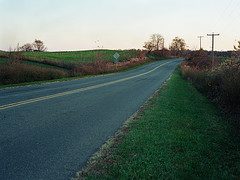
File photo
The American Recovery and Revitalization Act of 2009 (ARRA) included substantial funds for rural America, much of it targeted to low-income homeownership and some directed specifically to very poor locales. Under the administration of the US Department of Agriculture (USDA), these funds are being disbursed and doing some good. However, none of the ARRA money for rural housing is for rental, and the full influence of the stimulus on rural areas remains unclear.
Agriculture Secretary Tom Vilsack reported in congressional testimony on July 24, 2009, that the USDA has used ARRA funding to provide over 45,600 loans to rural Americans hit by the economic crisis. Of that loan total more than 43,000 have been low- and moderate-income housing mortgages. The USDA has also used ARRA to start more than 1,000 Recovery Act-funded rural projects.
The USDA’s Rural Development Agency, which administers the ARRA funds, oversees housing, rural electrification, water and wastewater, community facilities, business and other programs designed to help rural areas. ARRA provides $1 billion for USDA Section 502 direct homeownership loans and nearly $10.5 billion for Section 502 guaranteed homeownership loans, as well as USDA funding for rural community facilities, business, and water/wastewater programs. US Department of Housing and Urban Development (HUD) programs are also used in rural areas, and ARRA, through HUD, is providing $510 million for Native American housing block grants, $4 billion for public housing, $1 billion for Community Development Block Grants, $2 billion for the Neighborhood Stabilization Program and more.
ARRA also requires that at least 10 percent of the spending for each of the USDA’s Rural Development Agency’s community facilities, business, and water/waste programs included in the bill must be allocated to persistent poverty counties (those with poverty rates of 20 percent or more in the 1980, 1990, and 2000 decennial censuses). This does not apply to Sec. 502 funding. This interesting requirement was added by Rep. JoAnn Emerson (R-Mo).
But ARRA’s big-ticket spending for rural housing is over $11 billion in loans to help low- and moderate-income rural families buy homes. This is not a new program. The basic USDA rural homeownership program — called Section 502, after its place in the Housing Act of 1949 — is one of the oldest and least recognized low-income housing programs in the federal catalog. Since its inception in 1950, the Sec. 502 program has helped more than 2.5 million low- and very low-income rural families become homeowners. The program contributes to low-income homeownership safely and successfully, with fixed-rate, non-predatory mortgages made to qualified borrowers. In the “direct” Sec. 502 program USDA is the bank, and the loans all go to low- and very low-income borrowers (below 80 percent and below 50 percent of median). In the “guaranteed” program USDA insures a bank loan, with a more moderate income served.
ARRA did not provide funds for rental housing, unfortunately, as they are also much needed in rural America. USDA’s Section 515 direct loan program for rental housing has lost most of its funding since the mid 1990s, and demonstration programs to preserve aging rental properties have not been able to meet the demand for such financing.
USDA’s regular 2009 appropriations bill, separate from ARRA, provided both rental housing funds and substantial funding for the 502 homeownership programs. In addition, the 2010 USDA appropriations act appears likely to continue support for both single- and multi-family rural housing programs.
The USDA housing programs have been around for 60 years, quietly building units and sheltering families. The homeownership programs have helped build substantial assets for low-income people, and the rental units are an important resource for the most rural vulnerable populations. If the ARRA funds and annual appropriations are used widely and effectively, rural programs will meet severe needs and have a continued positive record upon which to build.





Comments